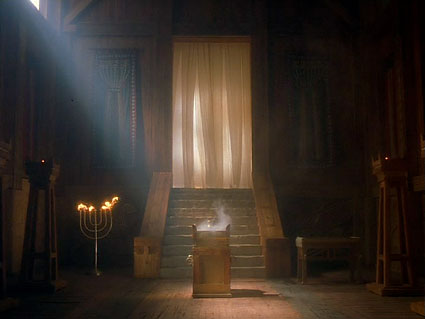Ish and Isha

Time for another weird post I think. Here’s some thoughts on Genesis 2:
“This at last is bone of my bones and flesh of my flesh;
she shall be called Woman, because she was taken out of Man.”
Why the change from Adam and Eve to Ish and Isha? Perhaps because the words are symbolic, and symbols describe relationships.[1] There is the possibility that these words were used because they sound like eish (fire), regardless of their differing derivations (the jury is still out on this one after 6000 years). Jordan mentions that Adam was to be an Altar made of earth, and with his own blood shed comes the “fire” of Isha, the woman as the shining on the altar, the glory cloud on Mount Sinai. It certainly corresponds with the feasts. Adam “ascends” to headship over Eve in marriage (Firstfruits), and then he is to “open the Law” to Eve and fill her with light (Pentecost), which he did, but failed to repeat the Law (Trumpets) after she was tested. Atonement followed.
But there is also the idea of fire-and-fire. He is the blazing torch and she the smoking firepot; he the Ark and she the Incense Altar (smoke), awesome as an army with banners; he the High Priest’s golden forehead, and she the breastplate carrying the tribes. Adam is the head, and Eve is the body. Adam fills Eve with light (as the Lamb in the holy city), and she fills the world with a holy host.
Day 1 Sabbath – Word to Adam (Ark) [2]
Day 2 Passover – Adam is divided (Veil)
Day 3 Firstfruits – the Lord fills Adam (Bronze Altar/Table of Facebread)
Day 4 Pentecost – Adam fills Eve (Lampstand)
Day 5 Trumpets – Eve fills the Land (Incense Altar)
Day 6 Coverings – Eve, as Land, (feminine in Hebrew) begets a Man from the Lord (Laver)
Because of Adam’s failure, every child that opened the womb was a “man of sin” and required redemption by blood.
We also see this pattern in Leviticus 1. The priest puts the fire on the Altar on “Day 4.”
Satan is the false light-bearer (a shining beast, like a golden calf), and demons are “strange fire” on the Altar, scavenger birds that need chasing away.
So Ish and Isha are terms related by Covenant. And they are brought near (sacrifice/offering in the Old Testament is literally “nearbringing”) by blood sacrifice. Based on this, when Ish (husband) fails to “die”, Isha (wife) is filled with darkness. Blood opens the veil between the Ark and the Incense Altar, and head and body are united to conquer the world.[3]
In the first century, the last Adam died and filled the church with the seven Lampstand lights of Pentecost. But a Herod also ascended—unwilling to die—and the false church was filled with seven demons (Matthew 12:45). False Eve worshipped the image of a beast, and begat a man of sin, a Cain, whom the Lord destroyed on “Day 7″ with the breath of His coming.
“Now when He rose early on the first day of the week,
He appeared first to Mary Magdalene,
out of whom He had cast seven demons.” Mark 16:9
_________________________
[1] Chilton observes that Bible symbols are not primarily to describe the “spiritual essence” of something, but rather to describe the thing’s symbolic value in relationship to something else. Jordan points out that in Revelation 12 Satan is a serpent to the Women (deception) but a Dragon to her offspring (persecution). This could also be a solution to the problem of how many wings cherumbim have. When in relationship to the four cornered Bronze Altar of the Land (Israel) they have four wings, but when seen in heaven, in relation to the Trinity, they have six wings. There are thus twenty four elders mediating between heaven and earth.
[2] The instructions for the Tabernacle in Ex. 25-31 follow the days of the Creation week.
[3] Note that despite the picture above, there were no stairs in the Tabernacle or Temple. Each section did imply an “ascension” to a higher level, but this “ladder to heaven” was laid out on flat ground in all cases. Actually, there’s a lot wrong with this picture, but you can see the Table, Golden Altar and Lampstand before the Veil.


























December 26th, 2010 at 10:34 pm
So, Mr. GraphicDesigner, give us a true acetate rendering of the palace!!
December 26th, 2010 at 10:39 pm
Check it out in 1 Kings. This pic above is so low budget it is deplorable.